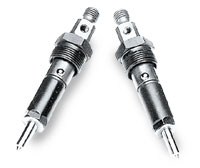Ten simple car maintenance checks for safe, worry-free motoring
The most important thing you can do to reduce the risk of breakdown is to get your car serviced to the manufacturer’s schedule and specification.
Beyond regular servicing the the following simple checks will help you to enjoy safe, worry-free motoring
TYRES
Know the correct tyre pressures for your car and check them at least every two weeks using a good-quality gauge or garage air line.
Check tyre tread and condition – look for cuts on sidewalls. If any one tyre needs regular top-ups, it may have a slow puncture.
Don’t forget to check the spare as well.
TOOLKIT
Check the handbook for the location of the basic toolkit for the car that should contain at least a jack and wheel removal tools.
Familiarise yourself with the jacking points used to lift the car safely.
If locking wheel nuts are fitted make sure that the toolkit includes the key or removal tool.
ENGINE OIL
Check the dipstick at least every fortnight and before any long journey.
Have the oil and filter changed at recommended service intervals using oil of the correct specification.
High oil consumption can indicate engine problems.
WATER
Check the coolant level regularly and top up as necessary – but only when the engine is cold.
Have the antifreeze concentration checked before winter.
Antifreeze prevents the build-up of corrosion within the cooling system as well as stopping the coolant freezing so is important all year round.
WIPERS
Wiper blades wear down over time and smear the windscreen if they become worn.
Replace them at least once a year for best performance.
SCREENWASH
Check and top up regularly – it’s a legal requirement that the system works.
Use a good screenwash additive through summer and winter – water alone won’t clear oily road grime and freezes more readily in winter.
WINDSCREEN
Check regularly for stone damage as this can impair vision or distract attention.
Minor chips can grow and crack the glass but many can be repaired by a windscreen specialist.
LIGHTS
Check all lights weekly. Don’t forget indicators, brake and fog lights.
Clean lights regularly. In bad weather wipe them over with a damp cloth during driving breaks.
POWER STEERING
Ensure that the fluid reservoir is checked at every service, and check it yourself once a month.
Top up only using the correct hydraulic fluid as advised in the car handbook.
BODYWORK
Deal promptly with damage to bodywork to prevent rust setting in.
Many cars have extended bodywork warranty schemes, which may require annual inspection at the dealer. Check that any previous owner has kept records up to date.

